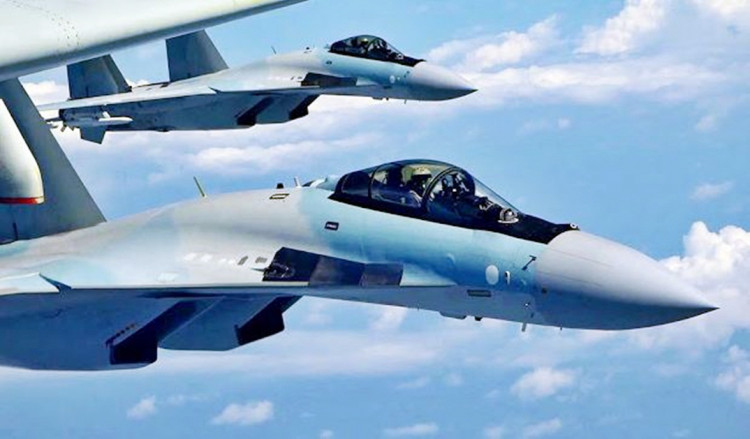Six strategic bombers from the Russian Air Force and the People's Liberation Army Air Force overflew the East China Sea and the Sea of Japan Tuesday in a joint operation viewed anxiously by both Japan and South Korea.
The second such joint mission since July 2019 over the same area saw two Russian Tu-95 "Bear" turboprop strategic bombers and four Chinese Xian H-6K jet bombers fly together in formation in another show of the deepening military ties between Russia and China.
The Russian Ministry of Defense said the joint mission was intended to "develop and deepen the comprehensive Russia-China partnership, further increase the level of cooperation between the two militaries, expand their ability for joint action and strengthen strategic stability."
It claimed the patrol flight "wasn't directed against any third countries."
The joint patrol again reopened rumors a military pact between China and Russia might be on the table. In October, Russian president Vladimir Putin said the idea of a future Russia-China military alliance can't be ruled out.
He also revealed Russia has been sharing highly sensitive military technologies with China, which helped significantly bolster the latter's defense capabilities.
Putin aims to develop closer ties with China as its relations with the West deteriorate to post-Cold War lows over Russia's illegal annexation of Crimea; Russia's meddling in the 2016 U.S. presidential elections and the attempted murders of Putin opponents Sergei Skripal and Alexei Navalny.
Russia and China had both hailed their renewed "strategic partnership," but still reject any talk about the possibility of their forming a military alliance to counterbalance the United States in the Indo-Pacific.
The previous joint mission by both air forces took place in July 2019 when a Russian Beriev A-50 airborne early warning and control aircraft escorted by PLAAF fighters intruded into South Korean airspace over the Sea of Japan.
McDonnell Douglas F-15K jet fighters of the Republic of Korea Air Force fired several hundred warning shots from their 20mm cannons to warn and ward-off the Russian/Chinese formation. The intruders later withdrew.
Russia claimed its aircraft remained in international airspace throughout the encounter. South Korean military analysts said the incident illustrates America's two great strategic rivals are working together to target and divide South Korea and Japan.
They noted the location of the intrusion took place over the disputed Takeshima islets, which are jointly claimed by South Korea and Japan.






